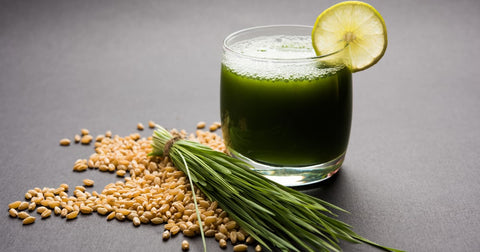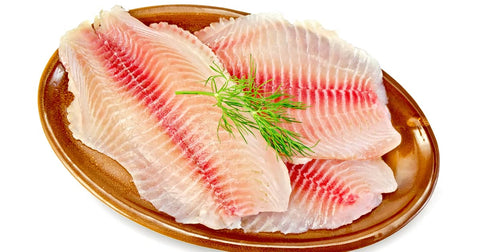If you’ve ever walked into a juice bar or health food store, chances are you’ve seen someone downing a bright green wheatgrass shot. This tiny, earthy-tasting liquid packs a powerful nutritional punch but what does it actually do for your health? And is it safe for everyone?
In this guide, we’ll explore the top wheatgrass shot benefits, explain what wheatgrass tastes like, and discuss whether wheatgrass has gluten. You’ll also learn how wheatgrass supports digestion, how to recognize signs of food intolerance, and when to consider a food sensitivity test kit before adding it to your daily routine.

What Is a Wheatgrass Shot?
A wheatgrass shot is a small serving (typically 1–2 ounces) of juice extracted from the tender green shoots of the wheatgrass plant the young leaves of the common wheat plant (Triticum aestivum). It’s often consumed raw and fresh for maximum nutritional potency.
Why it’s popular:
-
It’s loaded with vitamins, minerals, and antioxidants
-
Claimed to aid digestion, detoxification, and immune function
-
Fits easily into juice cleanses and plant-based diets
Does Wheatgrass Have Gluten?
One of the most common questions is: Does wheatgrass have gluten?
The short answer is: No wheatgrass does not contain gluten, as long as it is harvested before the wheat plant begins to form seeds. Gluten is found in the mature grain, not in the young grass blades.
Important precautions:
-
Cross-contamination can occur if wheatgrass is grown near mature wheat or harvested improperly
-
People with celiac disease or gluten intolerance should source from a reputable supplier and verify gluten-free certification
If you’ve experienced symptoms after consuming wheatgrass, it may be due to food intolerance or mild gluten sensitivity. A food sensitivity test kit can help you identify whether wheatgrass or another ingredient is the root cause.
What Does Wheatgrass Taste Like?
If you’re new to wheatgrass, you might wonder: What does wheatgrass taste like?
Wheatgrass has a bold, earthy, and slightly bitter taste. It’s often described as:

-
Grassy or vegetal
-
Similar to spinach juice, but stronger
-
A little sweet when freshly harvested
Because of its intense flavor, most people consume it as a quick shot rather than sipping it slowly. It’s also commonly mixed with citrus juice or blended into smoothies to make it more palatable.
Top Health Benefits of Wheatgrass Shots
1. Rich in Nutrients
Wheatgrass is packed with vitamins A, C, E, K, and several B vitamins. It also contains:
-
Calcium
-
Magnesium
-
Iron
-
Amino acids
-
Chlorophyll
These compounds contribute to energy production, immune function, and cellular repair.
2. Wheatgrass for Digestion
One of the most popular wheatgrass shot benefits is digestive support.
Here’s how it helps:
-
High fiber content supports regular bowel movements (when consumed in whole form)
-
Enzymes aid in breaking down food more efficiently
-
Chlorophyll may reduce bloating and gas by balancing gut bacteria
For those with sluggish digestion or chronic bloating, wheatgrass can be a natural addition to your wellness toolkit though individual results vary based on gut health and food sensitivities.
3. Detoxification Support
Wheatgrass is considered a natural detoxifier thanks to its high chlorophyll content. It may help:
-
Cleanse the liver
-
Bind to heavy metals and remove them from the body
-
Alkalize the bloodstream
This makes it a favorite during seasonal detox programs or when resetting dietary habits.
4. Immune System Boost

Its high antioxidant content helps neutralize free radicals and reduce oxidative stress both of which support immune function. Many people use wheatgrass as a natural wellness booster during cold and flu season.
When to Be Cautious with Wheatgrass
Despite its benefits, wheatgrass may not be for everyone. Some individuals experience:
-
Nausea
-
Headaches
-
Stomach discomfort
-
Fatigue or brain fog
These may be signs of food intolerance or a sensitivity to high concentrations of certain compounds in wheatgrass.
If this sounds familiar, it’s worth using a food sensitivity test kit to assess your body’s response. Testing can uncover whether wheatgrass, or another ingredient in your daily diet, is triggering symptoms.
How to Add Wheatgrass Shots to Your Diet
To get the benefits without overdoing it, start with 1 ounce per day, 3 to 4 times per week. You can gradually increase to 2 ounces if well tolerated.
Best practices:
-
Drink it on an empty stomach for maximum absorption
-
Don’t consume more than 4 ounces per day
-
Use it as a supplement, not a replacement for meals or medication
Final Thoughts: Are Wheatgrass Shots Worth It?

Wheatgrass shots are nutrient-dense, naturally detoxifying, and supportive of digestion making them a powerful addition to a balanced wellness routine. They’re especially popular for gut health, immune function, and natural energy.
But as with any superfood, the key is personalization. If you experience bloating, nausea, or discomfort after drinking wheatgrass, consider checking for food intolerance with a food sensitivity test kit. Knowing how your body reacts is the first step to making informed, health-boosting choices.
Frequently Asked Questions (FAQs)
1. Does wheatgrass have gluten?
No. The wheatgrass plant is harvested before seed development, making it naturally gluten-free but be mindful of cross-contamination.
2. What does wheatgrass taste like?
It has an earthy, grassy flavor that’s strong and slightly bitter. Most people drink it in quick 1–2 ounce servings.
3. What are the digestive benefits of wheatgrass?
It supports gut health by promoting healthy bacteria, providing enzymes, and easing bloating.
4. Can I drink wheatgrass if I have food intolerance?
You may be able to but if you experience symptoms, consider a food sensitivity test kit to see if wheatgrass is triggering a reaction.
5. How often should I take a wheatgrass shot?
Start with 1 ounce a few times per week. Adjust based on how your body responds.


.png?v=1737390083)
.png?v=1737187409)


